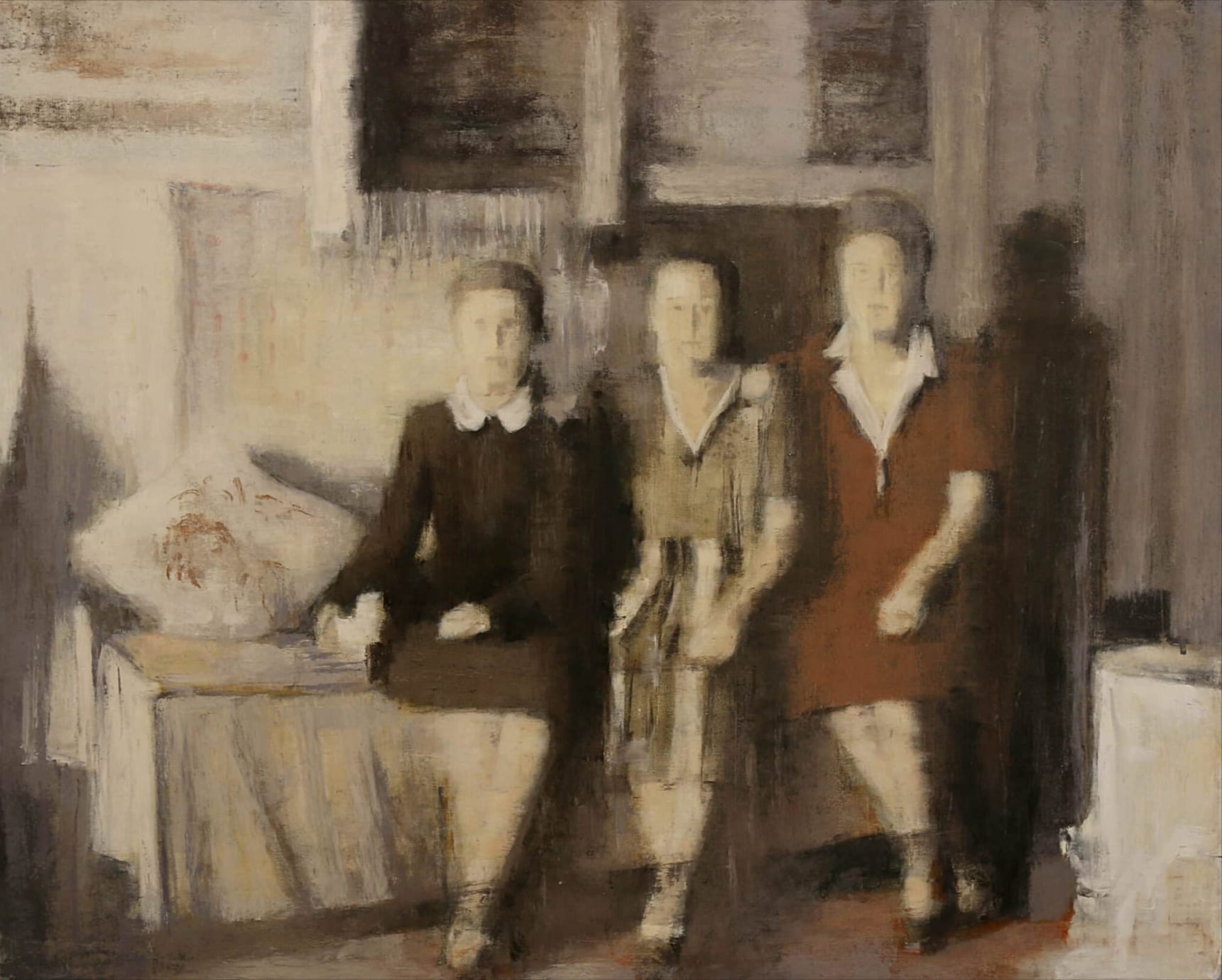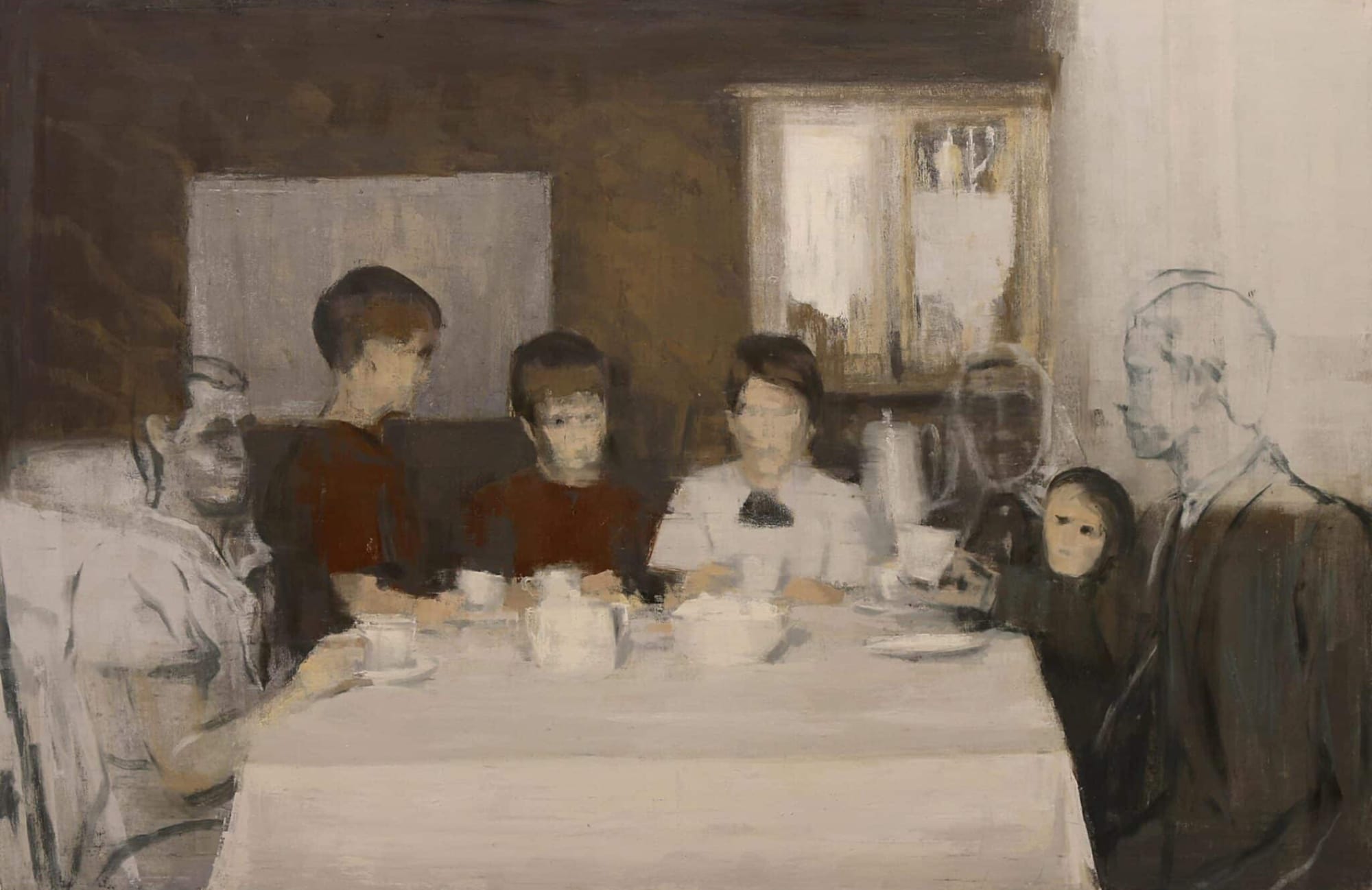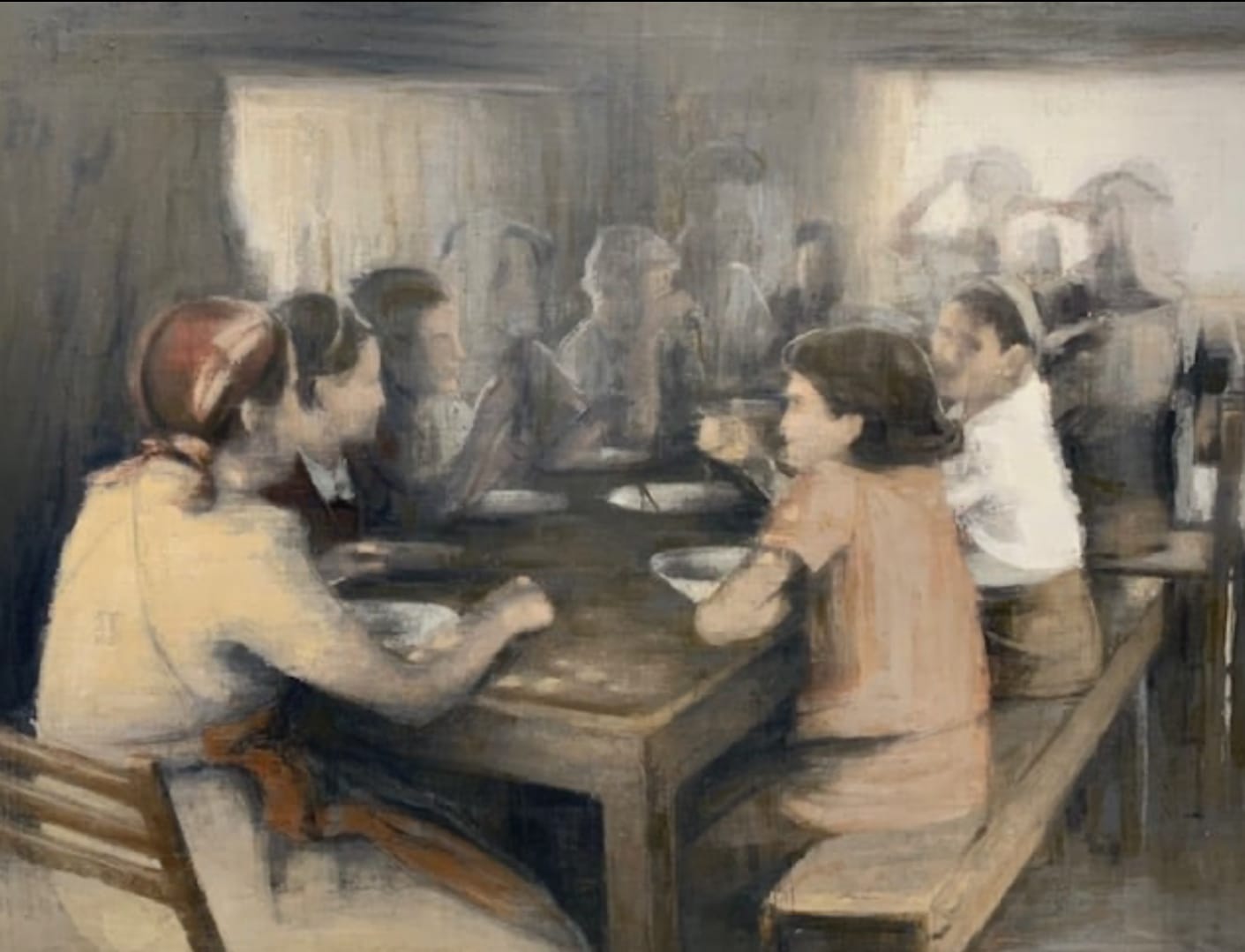In a series of paintings titled Ghost Wandering History, Iranian artist Morteza Khosravi paints groups of people that look as though they are faded photographs, with their edges frayed and their faces faded. These paintings mostly depict scenes of leisure where people, young and old, occupy and enjoy their space. This means that when gazing at his paintings, viewers have the same experience as they would if they were looking at old family photographs—where they are hit with a sense of nostalgia and reminiscence of better times of political, economic and environmental stability.

Being an Iranian based in Tehran, Khoshravi's paintings can be read through a specific lens which follows the recent history of Iran. This begins with how he was born into a post-revolution Iran, one in which he sees the country commandeered by a corrupt authoritarian regime. Hence, it is not too far-fetched to read Khosravi’s paintings as not only a nostalgia for times before the revolution but also a visualization of the decay and destruction that the previous generation has left behind. This is why the painting series Ghost Wandering History by Morteza Khoshravi is aligned with the United Nations Sustainable Development Goal of Peace, Justice, and Strong Institutions.

From time to time, Khoshravi uses his art to depict how Iran has faded into decay. He did so in his series Dessins, a series of fading nude portraits of Iranian women that was on view at the Simone Gallery, Paris. In Dessins, Khoshravi uses decay to illustrate how women’s rights, too, have decayed in Iran. As recently as December 2024, Amnesty International reported that Iranian authorities have adopted severe draconian laws that “impose flogging, exorbitant fines, harsh prison sentences, travel bans, and restrictions on education and employment for women and girls who defy compulsory veiling laws.” These ongoing turmoils make Khoshavi’s artistic endeavours all the more profound, as they help raise awareness for the oppressed peoples of Iran.

Morteza Khosravi’s Ghost Wandering History is a powerful meditation on nostalgia, memory and the relentless passage of time. His faded figures carry the warmth of a past that once felt stable, yet they also expose the fractures left behind by political and social upheaval. Through his work, Khosravi mourns what has been lost and critiques the enduring weight of history, particularly in Iran’s post-revolution era. His paintings serve as both a tribute and a warning—urging us to reckon with the past while pushing for a future shaped by justice and reform. Ghost Wandering History calls for accountability and resilience in the face of authoritarianism.
Find out more about Ghost Wandering History by Morteza Khoshravi and his other pieces on his website www.mortezakhosravi.com, his gallery page or Instagram @mortezakhosravistudio.
